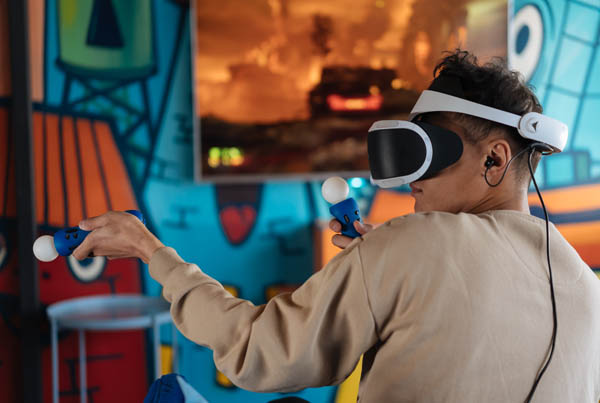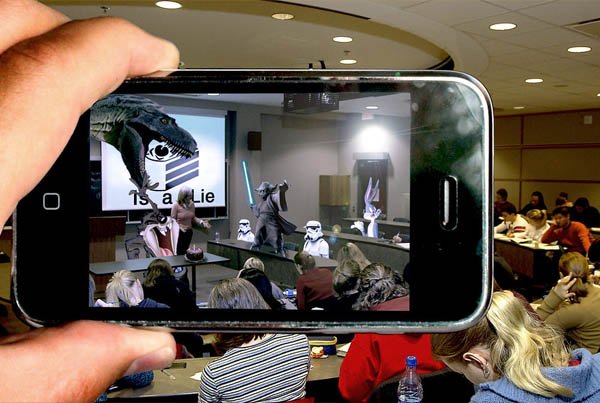Without leaving your classroom, imagine traveling back through time to visit ancient civilizations, faraway planets, or the ocean below. Due to the quick development of technology, virtual reality has made this possible. By enabling realistic and interesting learning experiences, virtual reality has transformed education.
The Impact of Virtual Reality on the Education System
Transforming education through Virtual Reality
A simulated experience known as virtual reality could have similarities to the actual world or be completely unconnected to it. To give the user a sensation of presence and immersion, it employs computer-generated settings. Thanks to virtual reality, the capacity of virtual reality to transport kids to many locations and periods is one of its main educational advantages. As kids explore ancient sites, witness historical events, and engage with historical characters, history lectures become real and engaging. Having direct contact with the material can help students understand it better and bring history to life in a way that textbooks cannot.

Expanding Science Education with Virtual Reality
Virtual reality expands the possibilities for teaching science. Students can visit different planets, see global events, and investigate the vast scope of the universe. They may carry out virtual experiments in a secure and regulated setting, making complex scientific ideas more tangible and understandable. Additionally, 3D representations of chemicals, cells, and organs may be seen and interacted with in VR, which helps students understand biology and chemistry.
Exploring Geography through Virtual Reality
The study of geography can greatly benefit from the use of virtual reality. Without leaving their classrooms, students may explore geographical areas, visit well-known sites, and learn about other cultures. They may take virtual field trips to famous museums, historical places, and natural marvels.
This can capture their attention and help them understand the bigger picture of what they’re learning.
Virtual reality also has the benefit of being adaptable to different educational needs and methods. Virtual reality (VR) offers individual and flexible learning opportunities since every learner learns differently. Students may study at their speed, get rapid feedback, and take a hands-on approach to their education through interactive exercises and games.
Read Also:
1. Coding Classes for Kids
2. Robotics for Kids
3. Virtual Reality for Kids
Bridging the Gap Between Theory and Practice with Virtual Reality
Virtual reality may also close the knowledge gap between theory and practice. It allows students to apply theoretical knowledge in practical scenarios, making learning more meaningful and relevant. For example, medical students can practice surgical procedures in a virtual operating room, honing their skills before working with real patients. VR may also be used in vocational training to reduce the danger and expense of practical instruction by allowing students to practice jobs and processes in a virtual environment.
Limitations of Virtual Reality in Education
While using virtual reality in education has its benefits, there are also some limitations to consider. Two important concerns are cost and accessibility. VR equipment can be expensive, and not all schools or students can afford it. But as technology advances while costing less, accessibility will likely increase in the future.
Additionally, proper integration of virtual reality into the curriculum is crucial. Educators need training and support to effectively incorporate VR into their teaching methods. Collaboration between teachers, technology experts, and content developers is essential to creating high-quality VR educational experiences. Furthermore, content should be aligned with curriculum standards and learning objectives to ensure its educational value.
In conclusion, virtual reality is revolutionizing education by providing immersive and interactive learning experiences. It transports students to different places and periods, making learning more engaging and memorable. VR enhances learning in subjects like history, science, geography, and vocational training, promoting active learning and critical thinking. Virtual reality in education has great promise, but there are a lot of challenges to be solved, including cost and accessibility.
The Promising Future of Virtual Reality in Education
Virtual reality will become more accessible, inexpensive, and integrated into educational environments as technology develops.
The future of learning lies in the hands of virtual reality. We could be expecting many more exciting possibilities for educators as technology develops further. Imagine classrooms where students can collaborate with peers from around the world, solving complex problems together in a virtual environment. Virtual reality can break down the barriers of distance and create a global classroom that fosters cultural understanding and collaboration.
Furthermore, virtual reality can provide inclusive learning experiences for students with diverse needs. It can accommodate different learning styles, allowing students to choose the best way to engage with the material. For visual learners, VR offers rich visualizations and immersive environments. For physical learners, interactive simulations provide a hands-on experience.
In addition to traditional subjects, virtual reality can also play a significant role in teaching important life skills. Students can practice public speaking in a virtual auditorium, develop empathy by stepping into someone else’s shoes, or learn about financial literacy through simulated scenarios. VR can create safe spaces for students to learn and grow, building confidence and preparing them for real-world challenges.
Investing in Research and Development for VR Education
Virtual reality offers many possibilities for education, and educators, decision-makers, and technology creators need to work together to unlock its full potential.
We must spend money on research and development to provide engaging and instructive VR experiences as the technology becomes more widely available and more reasonably priced. This includes developing high-quality content, designing user-friendly interfaces, and ensuring compatibility with existing educational systems.
The Role of Educational Institutions and Technology Companies
Collaboration between educational institutions and technology companies is crucial to driving the adoption of virtual reality in education. By working together, they can create standards and guidelines for the development and implementation of VR educational tools. This collaboration can also address the challenges of cost and accessibility by exploring innovative solutions and seeking funding opportunities.
As we look towards the future, virtual reality holds tremendous potential to transform education. It can engage students in ways that traditional methods cannot, fostering curiosity, creativity, and a love for learning. With virtual reality, education becomes a dynamic and immersive journey where students actively participate, explore, and create.
In conclusion, virtual reality is establishing a foundation for the future of education. Its immersive and interactive nature opens up endless possibilities for education. From exploring ancient civilizations to conducting virtual experiments, VR enhances students’ understanding and engagement. While challenges exist, such as cost and integration, the benefits of virtual reality in education are undeniable. We can build a transformational learning environment that prepares students for the possibilities and challenges of the twenty-first century by accepting this technology. The future of education is here, and it’s virtual reality.




